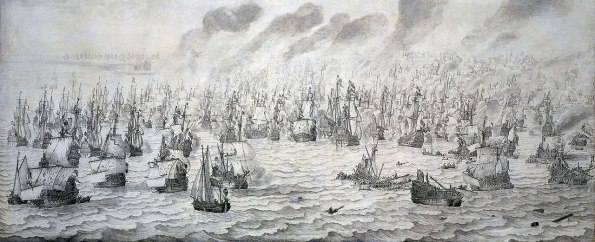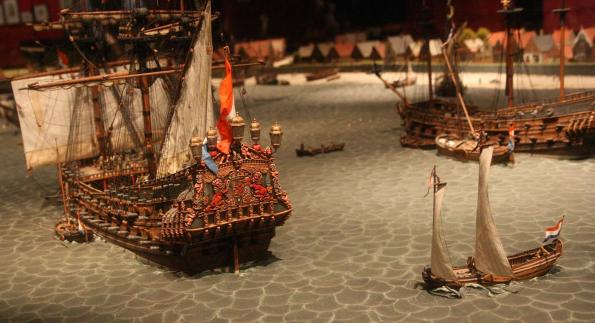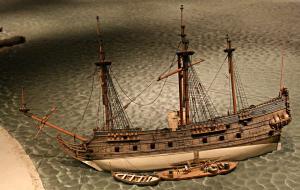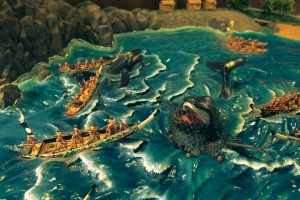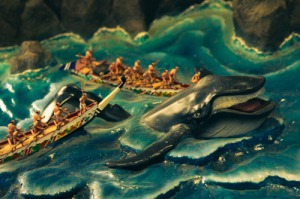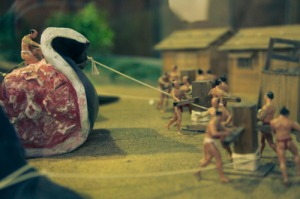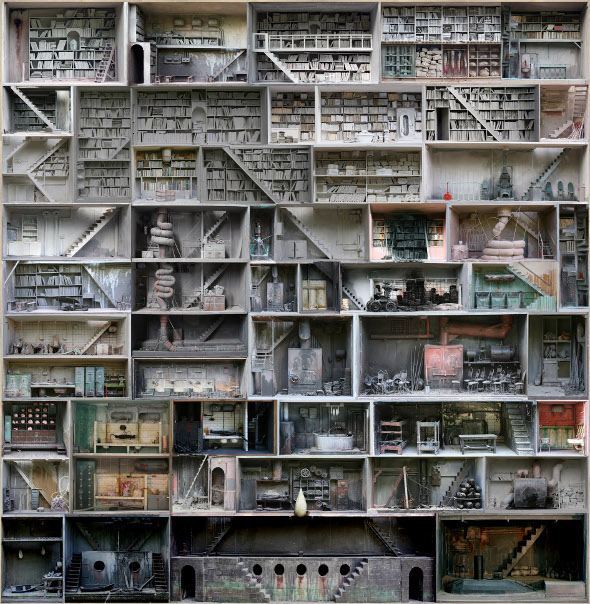Archive
Dutch ships in the 17th century: a diorama for CCH
One day soon (goaded by Michael Moscrip) I’ll post an actual thoughtful gaming article full of usable goodness, but from now until Christmas it’s gonna be lazy photoposting.
I’ve talked before at length about the diorama as an art form and a form of knowledge (and if you want more of that go read Steve Quinn‘s delightful book and hunt through the archives at fuckyeahdioramas). This here, though, is (a) pure pleasure; (b) a handy establishing shot of the Borg Invasion Fleet for Counter-colonial Heistcrawl –
the diorama of the Texel roadstead at the Jutters Museum, on Texel in the North Netherlands:
Texel is an island just off the coast of north Holland, strategically situated where the unfettered North Sea hits the sheltered and shallow “inner” or South Sea (Zuiderzee). The island has abundant water that stays drinkable for an unusually long time in barrels (due to some mineral inclusion I don’t really understand) and livestock. Through the period of the East India Companies the “roadstead” (shallow narrows between the island and the mainland) was the premier staging point for fleets leaving the Netherlands in all directions.
Ships would gather at Texel to wait for a favourable wind and tide to sweep them out into the North Sea and English Channel – sometimes for months at a time. They would be repaired and refitted and emptied of cargo and filled with fresh crew while at anchor in the Roads. If you wanted to gauge Netherlands sea power, your best bet was to hang out at Texel.
The diorama shows it “sometime late in the 17th century” – before the lustre had gone off the Golden Age. And I don’t know how many ships is has, but it’s a lot.
If you plan to play CCHeistcrawl and you really want to be alarmed about the navies that will grow up out of the first half of the 17th century, check out Willem van de Velde’s pictures of them arrayed against each other, fighting over ownership of the Atlantic:
The diorama shows merchant ships, whalers, fighting ships. Ships with battle damage from one of the Anglo-Dutch Wars:
Warships whose decorated spiegel sterns bespeak notable captains.
Little service vessels bustling around the great hulls like birds on a hippopotamus.
And everywhere contrasts: between the big ships and the little houses of the people that serve them:
between those houses and the cannon fort that defends the mouth of the Roads:
and between the costly business of war and the ruthless efficiency of Dutch trade:
that last image – the Baltic fluyt – is what the Dutch want to bring to the East Indies. Minimal crew, narrow deck, hull stretched out for cargo like an old shoe. That’s the ship that feeds the kitchens of Amsterdam with grain. Useless for fighting, optimally adapted for bulk extraction of resources. It only operate in places where you’ve already won the wars. In our own timeline it won’t be a practical instrument of colonialism until after the 1760s, and then it’ll be the English who wield that power, and they’ll adopt the faster Blackwall Frigate, and later the even faster clipper:
In the meantime (1600-1800, more or less) the Dutch will rely on their big East Indiamen, difficult to tell apart from warships:
(the East Indiaman is on the right), heavily armed and crewed – vehicles for soldiers, sailors (European, Chinese and Malay), guns and pepper. They’ll station old, leaky ones on port defense and shuttle routes around the Java Sea, and use them to provide an artillery backbone for the fleets of native canoes and caracoas that will fight all those obscure internecine wars between local princes that will slowly, but surely, grow their influence and colonies and arrogance.
But they won’t be easily dissuaded. See, the Indies trade will supercharge their economy – which they need because they’re already in massive growth of population and a war for independence with Spain. From 1600 t0 1665 Amsterdam, hub of the Indies trade, will grow sharply, from this:
to this (click to make much, much bigger):
It’s the realisation of a plan they come up with in 1610 – the year CCH begins – because right then they can see that they’re going to need a lot more city. For more and bigger houses, to accommodate their wealth. And although not all that growth can be credited to the East India trade (and it’s hard anyway to pick apart the influence of one trade among many in forming a commercial hub and economic powerhouse), some specific centres can be identified directly as indispensible parts of the machine:
Reward for getting this far: a bunch of fun dioramas from fuckyeahdioramas, including some delightful Japanese whaling ones especially for Arnold K:



